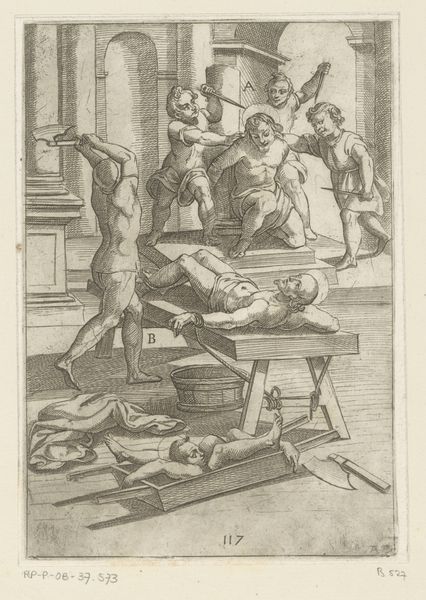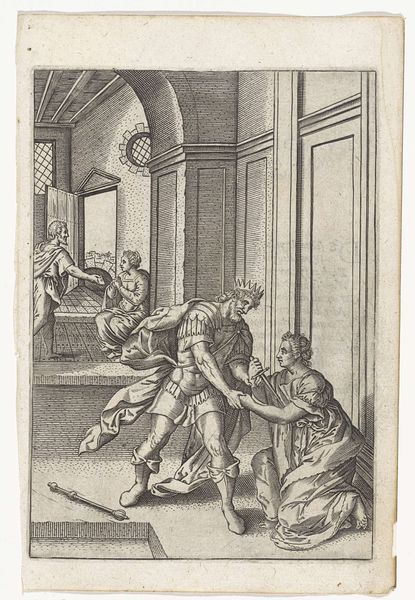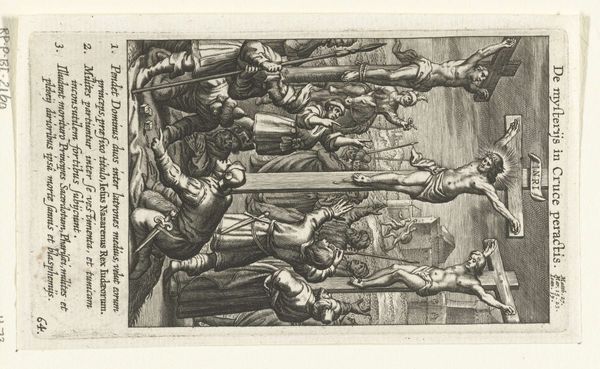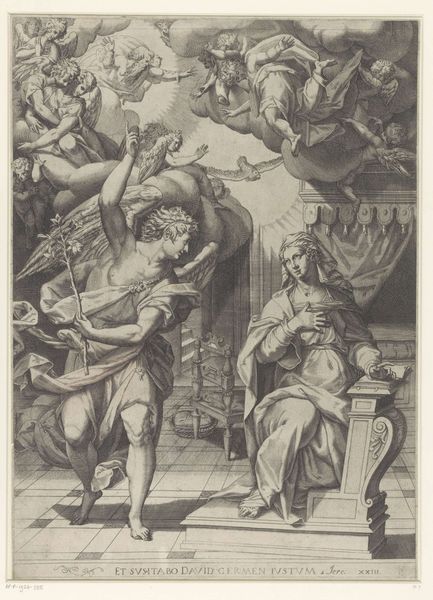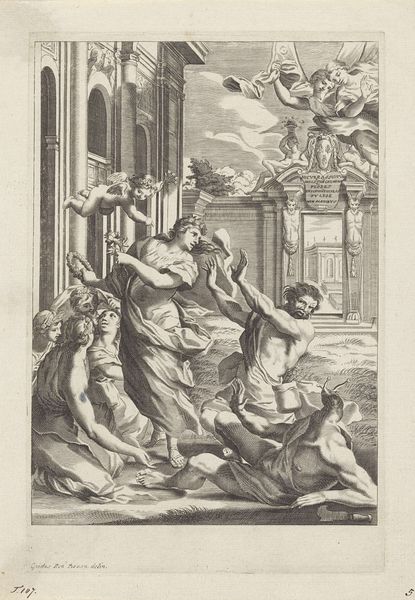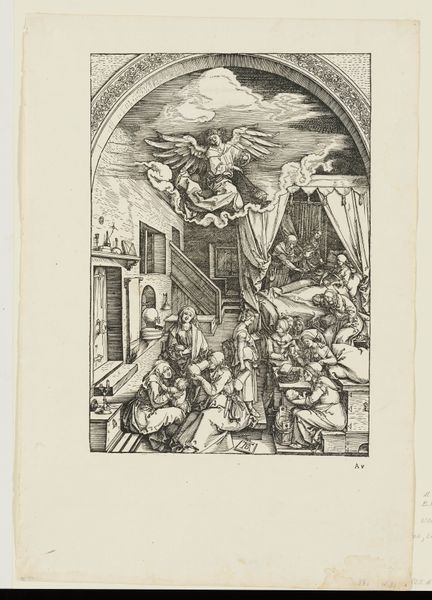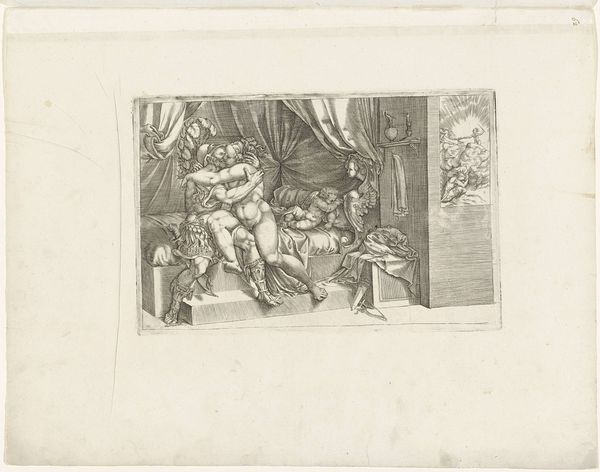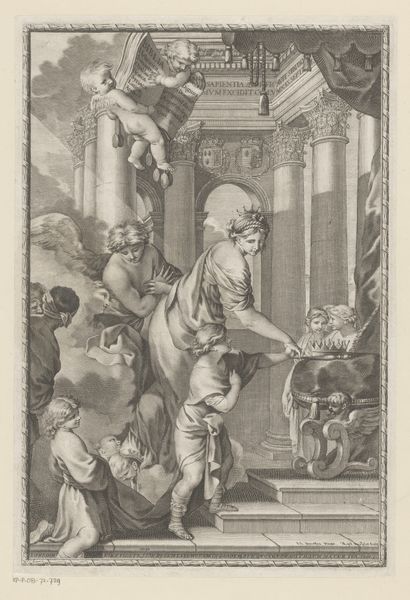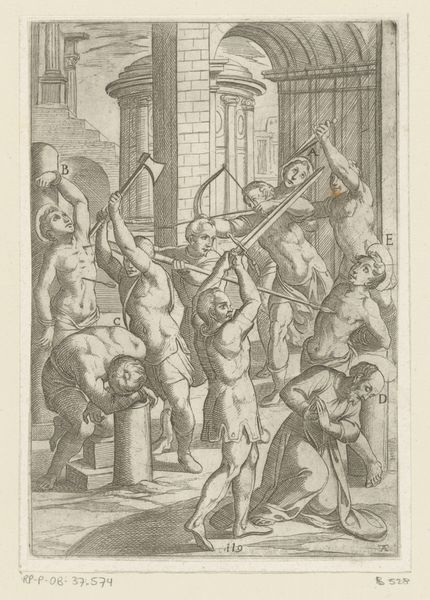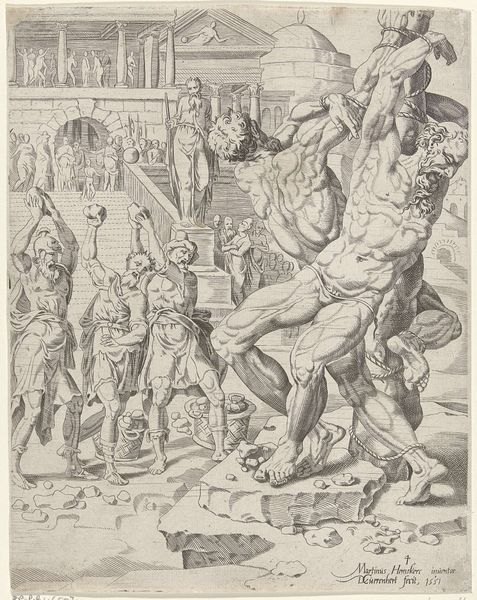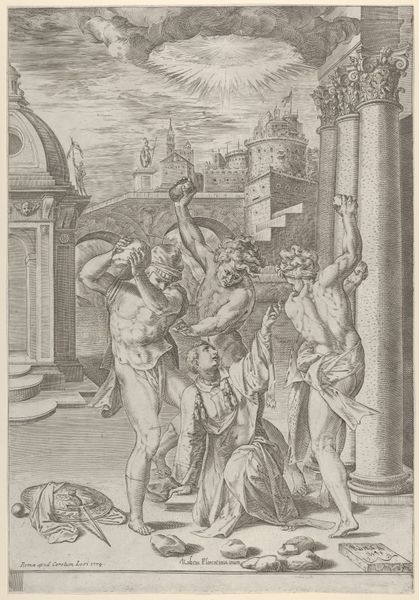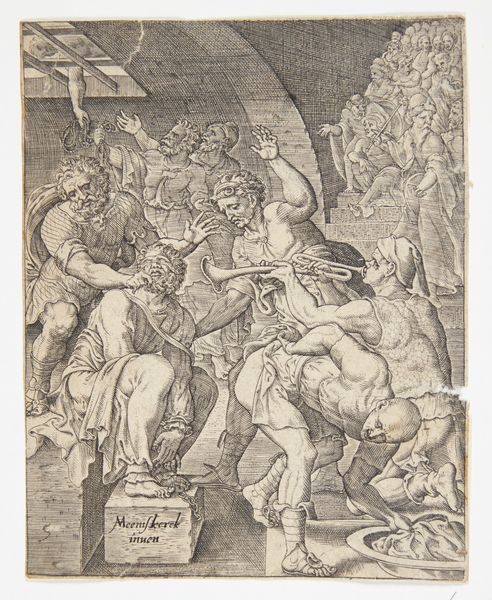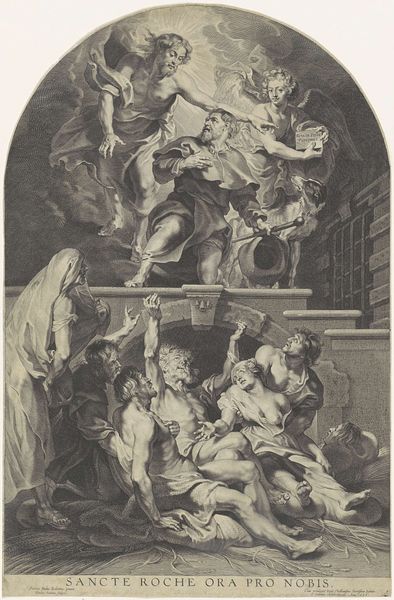
print, engraving
#
pen drawing
# print
#
figuration
#
history-painting
#
italian-renaissance
#
engraving
Dimensions: height 85 mm, width 115 mm
Copyright: Rijks Museum: Open Domain
Cornelis Bos created this tiny engraving, Saulus op weg naar Damascus, sometime in the mid-16th century. It's made by incising lines into a copper plate, inking it, and then running it through a press. Think about the labor involved in producing this print, though. The engraver needed not just artistic skill, but also the physical strength and patience to cut those lines. Engravings like this one were essentially a proto-industrial process, allowing images to be reproduced and disseminated widely. Notice how the stark contrast of black lines against the white paper heightens the drama of the scene, where Saul is thrown from his horse. The very precision of the engraved line lends a sense of divine power to the story. Bos wasn't just an artist; he was a skilled technician, part of a network of workshops producing images for a growing market. So, next time you look at a print, remember the hands that made it, and the complex social world that enabled its creation.
Comments
No comments
Be the first to comment and join the conversation on the ultimate creative platform.
